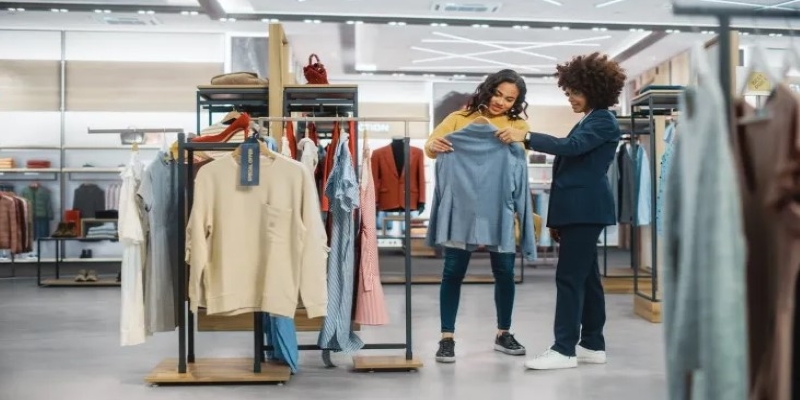Why Gen Z Is Changing The Future Of Shopping
Generation Z, the cohort born roughly between 1997 and 2012, has become a force to be reckoned with in the retail world. As the first truly digital-native generation, their shopping habits and expectations are reshaping the retail landscape in ways that no previous generation has done before. From how they shop to what they buy and where they spend their money, Gen Z's impact on the future of shopping is undeniable. This article explores the key factors driving this shift and how businesses can adapt to meet the needs of this powerful consumer group.
The Digital Shopping Revolution
For Gen Z, shopping is no longer confined to physical stores. The line between online and offline shopping has blurred, with digital platforms offering convenience, variety, and instant access to products. Unlike older generations who witnessed the rise of e-commerce, Gen Z has never known a world without the internet, and this has influenced their entire shopping experience.

Gen Z spends a significant amount of time on social media platforms such as Instagram, TikTok, and YouTube. These platforms have evolved into shopping hubs where users can engage with brands, influencers, and peer recommendations. The ability to shop directly through these apps, whether it's through embedded product links or live-streamed shopping events, has made Gen Z's shopping experience seamless and highly integrated into their daily lives.
This generation prefers to make purchases with the convenience of a few clicks, bypassing the traditional in-store experience. They're accustomed to browsing and buying on the go, often using their phones as their primary shopping tool. Businesses that fail to adapt to this mobile-first shopping trend risk losing touch with this influential group.
Social Influence And Peer Recommendations
One of the most significant drivers of Gen Z's shopping habits is the power of social influence. Unlike previous generations that relied heavily on traditional advertising, Gen Z turns to social media for inspiration, product recommendations, and reviews. They trust their peers, influencers, and content creators more than they trust brands themselves.

Social proof plays a crucial role in shaping Gen Z's purchasing decisions. They often rely on online reviews, TikTok videos, Instagram stories, and YouTube unboxing videos to validate their choices. A product’s online presence—its reviews, mentions, and user-generated content—can make or break its appeal to Gen Z. This shift means that businesses must focus on building strong social media presences and fostering authentic interactions with their audience.
Additionally, Gen Z values authenticity over polished marketing. They are quick to reject products or brands that come across as inauthentic or disconnected from their values. For this reason, influencer marketing is especially effective when influencers are seen as genuine, relatable, and aligned with the brand’s values. Gen Z’s purchasing behavior is increasingly tied to the trust they place in those they follow online.
Sustainability And Ethical Shopping
Another defining characteristic of Gen Z shoppers is their commitment to sustainability and ethical consumption. Growing up amidst concerns about climate change, environmental degradation, and social justice, Gen Z has developed a heightened awareness of the impact their purchasing decisions have on the world. They are more likely than any other generation to choose brands that align with their values, such as those that prioritize sustainability, ethical labor practices, and eco-friendly materials.

This shift is already evident in several sectors, particularly fashion and beauty, where Gen Z is pushing for brands to adopt more responsible practices. Many Gen Z shoppers actively seek out products made from recycled materials, those that minimize environmental harm, and companies that support social causes. For retailers, this means that transparency and a clear commitment to ethical standards are no longer optional—they’re a key part of gaining Gen Z’s loyalty.
Moreover, the secondhand market has gained immense popularity among Gen Z, especially in fashion. Platforms like Depop, Poshmark, and ThredUp allow young shoppers to buy and sell pre-loved items, promoting a more circular economy and reducing waste. For many in this generation, shopping secondhand is not just about saving money—it’s a way to contribute to sustainability while still staying stylish and on-trend.
Personalization And Customization
Gen Z’s expectations for personalized shopping experiences are higher than ever. With access to vast amounts of data and sophisticated algorithms, Gen Z expects retailers to offer products, recommendations, and experiences tailored to their individual preferences. Whether it’s through personalized ads on social media, curated product recommendations on e-commerce sites, or customized experiences in-store, this generation values relevancy above all else.
Personalization can take many forms, from product recommendations based on past purchases to creating unique, one-of-a-kind items. In the beauty and fashion industries, brands have embraced customization, offering products that allow Gen Z to reflect their unique identity. This could be through custom shoes, personalized skincare regimens, or makeup products designed to suit individual skin tones. By giving customers the ability to personalize their purchases, brands can forge stronger connections with Gen Z.
However, personalization goes beyond just products—it extends to the entire shopping journey. From personalized emails to tailored landing pages and customer service interactions, Gen Z expects retailers to recognize them as individuals. This generation values efficiency and relevance, so any aspect of the shopping experience that feels disconnected or irrelevant is likely to be dismissed.
The Influence Of Technology On Shopping Habits
Technology has played a massive role in shaping how Gen Z shops, from the use of artificial intelligence to augmented reality (AR) experiences. Virtual try-ons, interactive shopping experiences, and the use of AI-driven chatbots for customer service have become commonplace for this generation. AR apps that allow users to visualize how products might look in their homes or on their bodies have become increasingly popular, especially in industries like home decor, fashion, and beauty.

For instance, beauty brands are using AR technology to enable Gen Z shoppers to try on makeup virtually, giving them the confidence to make purchases without stepping foot in a store. Similarly, furniture retailers have adopted AR to help customers visualize how a piece of furniture will look in their space before making a purchase. These tech-driven experiences are key to keeping Gen Z engaged and satisfied, as they offer an interactive, immersive experience that traditional shopping cannot match.
The use of AI is also evident in the rise of personalized shopping assistants, where chatbots or AI algorithms help guide customers through their shopping journey, offering product suggestions and answering questions in real time. For Gen Z, who has grown up with instant access to information, these technologies make shopping more efficient and enjoyable.
Omnichannel Shopping And Seamless Experiences
Gen Z is used to seamless, omnichannel experiences that allow them to shop across multiple touchpoints. Whether they’re shopping online via their phones, visiting a store, or interacting with a brand on social media, they expect a consistent and cohesive experience. This means that retailers must integrate their online and offline channels, ensuring that customers can easily transition between them without friction.

For example, Gen Z expects to be able to browse products online, check availability at local stores, and place orders for in-store pickup or home delivery. They also value the ability to return online purchases in-store, making the overall shopping experience more flexible and convenient. Retailers who fail to meet these expectations risk alienating Gen Z shoppers, who demand a high level of convenience and accessibility.
Conclusion
Gen Z is reshaping the future of shopping by demanding more personalized, seamless, and socially responsible experiences. They are driving the shift toward digital-first shopping, influencing trends in sustainability, and using technology to create new, interactive shopping experiences. For businesses looking to engage this powerful generation, adapting to these changing preferences is essential. Companies must embrace the digital landscape, prioritize authenticity, and invest in technology to stay competitive. By understanding and responding to Gen Z’s unique shopping habits, brands can build lasting relationships with this generation and position themselves for success in the future of retail.





